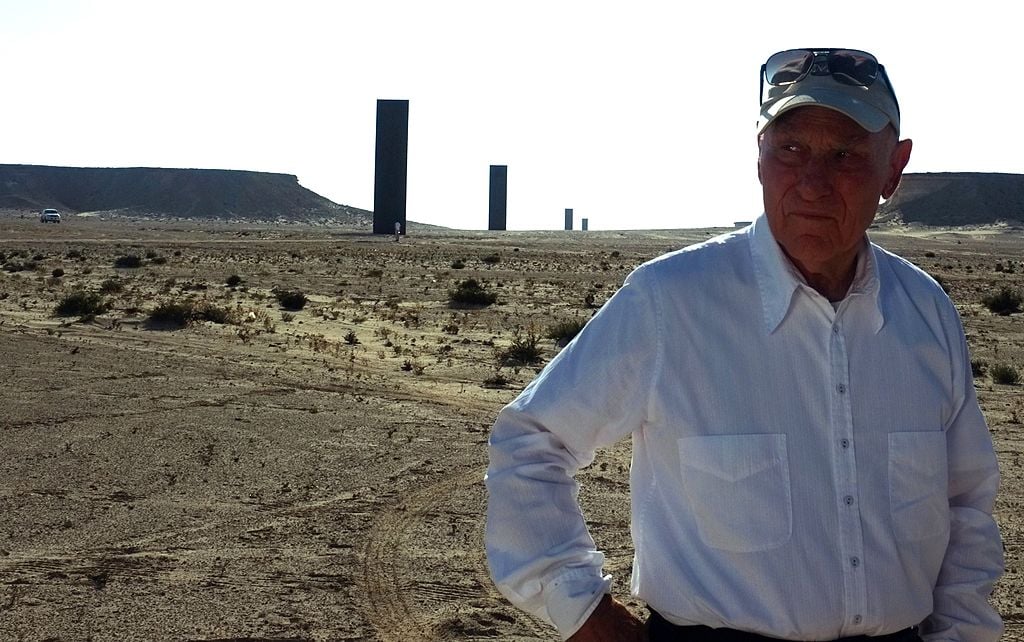Art World
Tracking The Rise and Fall of Qatar’s Art Scene
A former Qatar Museums employee speaks out.

Image: Courtesy of Qatar Museums Authority via www.qm.org.qa
A former Qatar Museums employee speaks out.

Eileen Kinsella

In a detailed report on Quartz, former Qatar Museums employee Mikolai Napieralski details the rise and fall of the art scene in Qatar, outlining the cultural and financial forces that were behind the trophy art acquisitions and breakneck pace in building museums.
The glossy push for art and design acquisitions largely began in the mid-2000s. The royal family’s vast wealth enabled it to enlist the services of “starchitect” I.M. Pei to design the Museum of Islamic Art, as well as to back major exhibitions of artists including Damien Hirst, Takashi Murakami, Richard Serra, and Louise Bourgeois, among others. The Qatari family was reportedly the buyer behind both Paul Cezanne’s The Card Players, for $250 million in 2012, and Paul Gauguin’s When Will You Marry, sold for a reported $300 million in 2015—two of the most expensive art deals in history—though the works have never actually been openly displayed in the country.
But this push for modern and contemporary art wasn’t without obstacles in an extremely conservative culture. For instance, Adel Abdessemed’s Coup de tête (2012), a statue depicting Zinedine Zidane’s notorious soccer head butt—sparked outrage and was deemed “anti-Islamic,” by conservatives in the country. As a result, it is not difficult to envision that challenges that lie ahead, as Jean Nouvel’s $434 million National Museum of Qatar gets its finishing touches.
But few people have written a behind-the-scenes report on Qatar’s culture grabs. Until now.
Napieralski writes about the wave of expats—familiar to those of us in the art world and art press who watched a slew of high-profile names— including former Rhode Island School of Design president Roger Mandle, Christie’s CEO Edward Dolman, and Christie’s contemporary art specialist Jean-Paul Engelen, make the move to the Middle East to work for Qatar Museum Authority (QMA) and Sheikha Al Mayassa bint Hamad bin Khalifa Al Thani (daughter of the Emir), only to quietly return to Europe or the Americas a few years later.
In 2006, I was assigned to write about QMA for ARTnews, and joined a crowd of at least 150 reporters, curators, and other art world figures who were invited to lunch, hosted by Marie-Josée Kravis (who at the time was a QMA board member and MoMA president). It took place in the atrium of the Museum of Modern Art, where the Sheikha herself was in attendance. Roger Mandle was announced as QMA executive director and Jean Nouvel awkwardly attempted to present a slide show of his designs for the National Museum of Qatar.

Richard Serra stands on April 08, 2014 in front of his new permanent art installation. The artwork created for Qatar is called East-West/West-East, and is located some 60 kms outside of Doha at the Brouq Nature Reserve near Zekreet. The massive plates span 1 km of the area, and is set in a natural corridor formed by gypsum plateaus, the Qatar Museums Authority said in a statement. Courtesy of VICTORIA BAUX/AFP/Getty Images.
The report scenes of culture clashes that will be familiar to anyone who has read Dave Eggers often hilarious novel A Hologram For The King, in which a hapless American attempts to travel to the Middle East to pitch a new business idea, Napieralski says:
In Qatar, public perception and “saving face” are paramount, which means any differences in opinion have to be framed in the most diplomatic terms. Office hours tend to be relaxed, and schedules can be pushed back (or completely disregarded) with little more than a casual Inshallah, a common phrase throughout the region that translates as “God willing.” Team this with the constant, unspoken tension about who’s actually in charge—the Western expats hired to run projects or the local Qataris they were supposed to be training—and you don’t wind up with a terribly positive cross-cultural working environment.
Napieralski then describes how clashes over the subject matter, pay grades, and the exploitation of migrant workers (who were paid $11 a day) exacerbated things.
The Western staff that had been brought over as curators, conservators, researchers, and marketers weren’t blind to any of this. But when you’re living in a five-star hotel, getting flown business class to conferences around the world, and being handed a $5,000 allowance for a few nights overseas—no questions asked—it’s easy to overlook the injustice faced by others. I was guilty of it. We all were.
As a result, Western expats at QM eased their guilt with generous tips for the service staff and a heavy dependence on alcohol. $25 cocktails at the W Hotel were an excellent way to forget that you were in the middle of the desert, surrounded by glaring wealth disparity and labor abuses. When the booze failed to fix things, people would simply implode, getting arrested, fired, and deported for a kaleidoscope of offenses.
But the final blow, Napieralski writes, was the steep drop in oil prices:
Qatar’s rapid ascension from regional backwater to international art dealer was built on the back of huge oil and natural gas reserves. These provided Qatar with 70% of its revenue and made the tiny Gulf state the richest country in the world. But it also meant the economy was extremely susceptible to the looming oil price crash.
At the start of 2014, crude oil was a hovering around $110 a barrel, a ballpark figure it had maintained for several years. By the end of the year it had fallen to $50, and by the time it bottomed out in late 2015, the price was just $28 a barrel. This dive was caused by a sluggish international growth and a massive upswing in oil production from US fracking.
For QM, this meant the party was over.
artnet News reached out to Qatar Museums, but did not receive an immediate response.